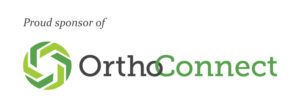Our application is designed to empower customers in reaching potential patients, and Predictive Patient Targeting stands as a cornerstone in achieving this goal. To ensure our predictive models are robust and aligned with the latest consumer data, we perform quarterly updates. This release marks one such update to keep our models as current as possible. By staying ahead with regular updates, our customers can effectively engage with individuals who are most likely in need of identified care.
We’ve also introduced a refinement step in the Predictive Audience creation flow. This step allows users to adjust audiences based on a subset of demographic data. Before any checks for removing current patients or duplicate households, a visualization of the audience representation by age and income levels is presented. Users can exclude specific demographics by clicking on corresponding bars. Additionally, filters for insurance types have been incorporated, enabling nuanced audience segmentation. While these filters offer greater control, users are reminded of potential risks to the model’s predictive ability, and filtering is limited to maintain model validity.
User insights from the postcard tool usage led to refinements in the design step of the postcard creation wizard. Visualizations for fonts and layouts have been introduced to enable users to preview selections without navigating away from the current step they’re on. Acknowledging diverse marketing needs, we’ve expanded call-to-action options on postcards. Users can now choose from multiple options in the postcard creation design step, allowing for a more versatile approach. This flexibility empowers customers to tailor postcard campaigns to varied marketing objectives beyond appointment scheduling. These updates streamline the postcard creation process for a more seamless user experience and empower users to drive a wider variety of patient actions.
Surveys and Patient-Reported Outcomes (PRO)
Our focus on enhancing survey capabilities continues, with a special emphasis on Patient-Reported Outcomes (PRO) Surveys. These self-reported surveys, spanning different intervals before and after care treatment has been received, provide valuable insights into patients’ health outcomes. We’ve introduced new reports and features to support HOOS JR surveys, allowing detailed filtering and analysis.
In summary, this release represents a significant step forward in optimizing user experiences and expanding functionality. We remain dedicated to empowering our customers in their patient targeting endeavors.










